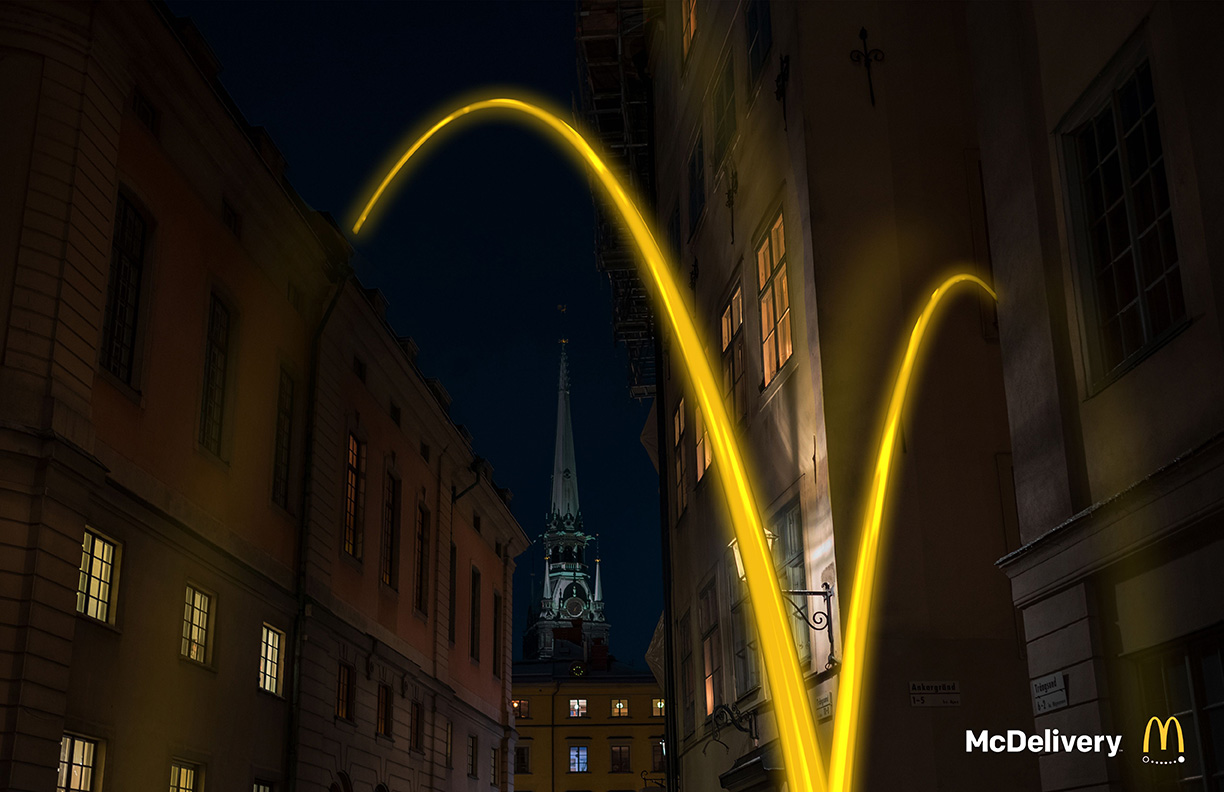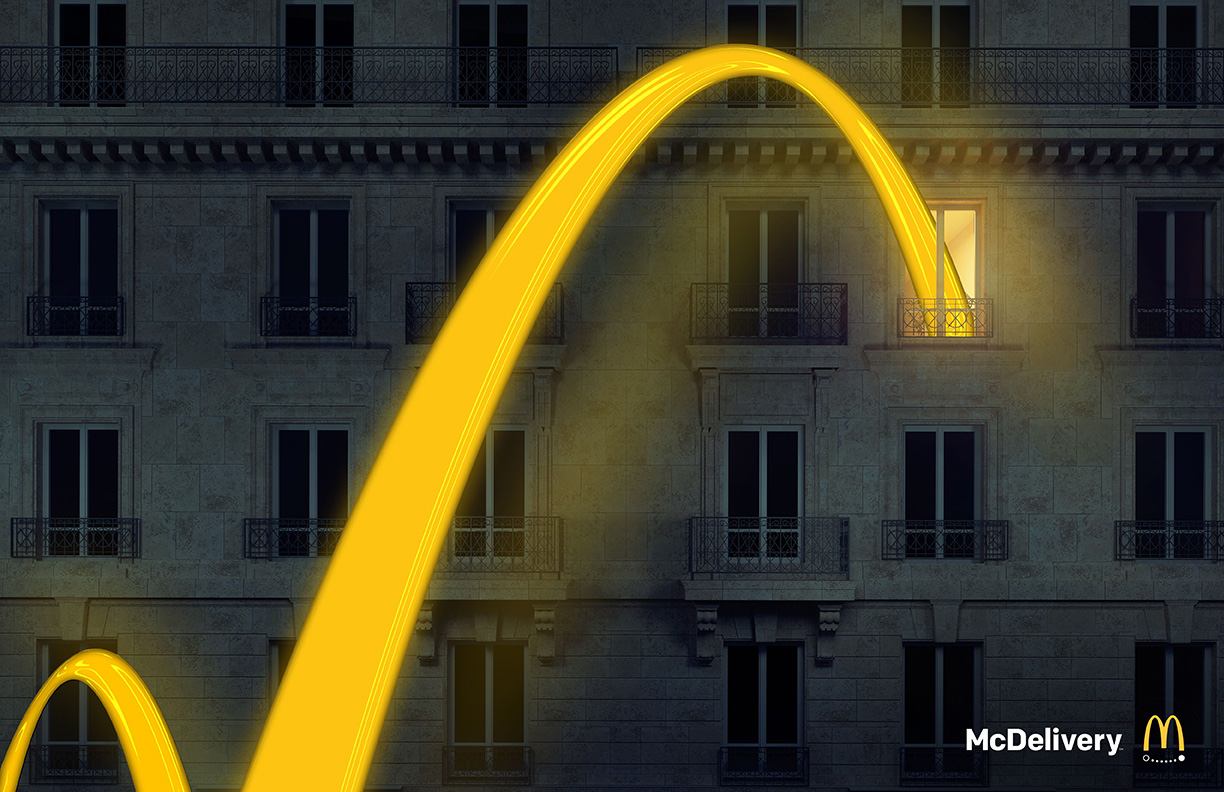Creative advertising students break another record with 26 wins in the New York Festivals Advertising Awards competition
Creative advertising students won eight finalist awards and 18 shortlist awards in the New York Festivals Advertising Awards competition for a total of 26, an impressive increase from the previous year’s total of nine. Newhouse had the fifth most wins of advertising schools worldwide, and the third most in U.S. wins.
“I continue to be blown away by the level of thinking coming out of Newhouse, so it’s no surprise to me that they are still crushing it in the shows,” says Newhouse advertising alumnus Ari Halper ’92, global head of creative excellence at R/GA in NYC. “Work like ‘Greenscreen,’ ‘Have It The Real Way,’ ‘McDelivery’ and ‘uTINTsil’ are all as strong as anything in our industry, which makes me extremely excited to see what happens once this talent graduates into the workforce.”
“I am consistently impressed with the work of our creative advertising students,” says Newhouse dean Mark J. Lodato. “The level of accomplishment at the New York Festivals is outstanding and emblematic of the talent and hard work of our students and the faculty who teach and guide them.”
The award-winning work came from Portfolio II and Portfolio III courses in the advertising creative track, taught by professors of practice Mel White and Kevin O’Neill.
“I look at these campaigns and know how hard our creative advertising students worked on them,” White says. “To have the New York Festivals award so many of our creative advertising student campaigns is very rewarding. It makes all of the trips the students made back to the drawing board worth it.”
Rachel Hayashi, art director, and Jessica Mastorides, copywriter, won two finalist awards at New York Festivals. In the Positive World Impact category, they won for their digital Apple campaign, “PAL / Protect Asian Lives” (video). The brief asked the creatives to use new technology to solve a real-world problem. Since the pandemic started, there has been a rise in the U.S. of racist violence against Asian Americans—at least 3,800 anti-Asian hate incidents since March 2020. Mastorides says constantly hearing about this surge of violent anti-Asian attacks showed the team the real-world problem they wanted to solve.



“We both felt passionate about this issue, and have friends who were personally impacted by it, so we wanted to create an innovative solution to stop Asian hate,” Mastorides says. “We did a ton of research on Asian communities and the struggles they face, specifically in relation to reporting crimes against them. We found that Asian Americans don’t feel comfortable self-reporting crimes against them, which leads to massive underreporting. Not only that, but the justice system requires hard evidence to convict a hate crime, which makes it impossible for most victims to prove it in court.”
Mastorides says the team knew their solution not only had to allow Asian Americans to easily and comfortably report harassment, but it also had to collect evidence for them as well to identify the true scope of the hate crimes. They came up with the idea for a feature on iPhones that makes reporting harassment easily accessible. When leaving the house, users will be prompted to turn on PAL and allow it to track their location. If any anti-Asian language or slurs are detected while in use, PAL will begin discreetly recording audio, upload all evidence to a secure database and report the incident to the nearest police station as well as an advocate from the organization Stop AAPI Hate.
“Once we fully understood the scope of the problem, it was just a matter of figuring out how the technology can be used to solve it,” Mastorides says. “We realized voice activation has the ability to listen in if it hears certain phrases, so if there’s any anti-Asian language being used then your iPhone can automatically start recording audio as soon as it hears it. This was the basis of our idea, so then we started to think of ways to expand it with other existing iPhone technologies like location services and secure databases. Overall it was a lot of looking into how these technologies work and how we can solve anti-Asian discrimination with it.”
In the Avant-Garde/Innovative category, Hayashi and Mastorides won for their Burger King campaign “Have It The Real Way” (video). This campaign was one of eight winners worldwide in the category. “Have It The Real Way” celebrates Burger King’s use of 100% real ingredients by making their advertising just as real, avoiding the styling used to make burgers look unrealistically perfect in ads. They also included the Burger King app in the campaign, using it to airdrop flyers onto McDonald’s customers’ phones enticing them to take a photo of the competitor’s burger to receive a Burger King discount. Google Lens technology would recognize the McDonald’s burger, find its perfect-looking ad counterpart and then compare the two and calculate the percentage difference, giving the customer the percentage of savings for their Burger King meal.


Sam Luo, art director, and Grace Curran, copywriter, won a finalist award in the Outdoor category for their Duolingo campaign “Pardon Our French” (video). The campaign was one of six winners worldwide in the category. The team used the insight that young people find learning a new language boring. Luo and Curran found an interesting and interactive way to get Gen Z interested by learning swear words in multiple languages. They would place scannable stickers of the Duolingo owl next to graffiti with “colorful” language around London. When a user scans the QR code on a sticker, it would take them to a page that translates the swear word into a variety of languages. The page would also show them clues so they can find other stickers in the area and continue their language learning journey.
Luo and Olivia Gormley, copywriter, won a finalist award in the Positive World Impact category for their digital campaign for Connect4Climate “Greenscreen” (video). The team created the concept of an Amazon search filter that prioritizes eco-friendly products over disposable or single-use items in the search results when activated.
Luo also won in the Print category for his “McDelivery” McDonald’s campaign. “McDelivery” was one of three winners in the category worldwide.



Marta Lala, copywriter, and Cerinn Park, art director, won a finalist award in the Positive World Impact category for their new P&G product “uTINTsil” (video). They found that one in 13 children has a food allergy in the U.S. and risk suffering an allergen attack due to accidental cross-contamination in food. Their solution would be plastic utensils that change color after coming in contact with specific allergen proteins detected in food, signaling that the food is unsafe to eat.


Brian Chau, art director, and Shaoli Yusaf, copywriter, won a finalist award in the Positive World Impact category for their digital Google Nest campaign “ARI, Defending the Rights of Immigrants” (video). Chau and Yusaf note that the growing prevalence of ICE raids and the spread of violence towards immigrant communities inspired them to create the concept of the ARI app. ARI would be a home assistant that works with Google Nest’s security system to notify homeowners of approaching ICE agents. In the app, immigrants can review their rights and speak to agents through ARI without opening their door. After an encounter with ICE, home occupants can confirm their safety in the app as well.
Derek Rosen, copywriter, won a finalist award in the Audio/Radio category for his “Noticeable Benefits” (Radio campaign) for Michelin. He found that people often don’t want to pay the extra money for Michelin tires, thinking they only have minor improvements over other tires. He decided to incorporate the brand’s benefits into something people experience in everyday life: music. Using three different songs with lyrics about stopping, Rosen lengthened the verse to show that with other tires, your car might take longer to stop when compared to Michelin tires. He says creating a campaign that worked without visuals was an enriching challenge.
“Crafting an idea using only words and sounds is extremely challenging and requires a high level of creativity,” Rosen says. “However, that also means that creating an effective radio ad is that much more rewarding and impressive. I find that radio is one of the most relatable forms of advertising because it forces you to utilize sounds that all audiences can recognize and relate to.”
The reactions his campaign received were part of what originally made him want to enter it into the competition.
“Whenever I showed my classmates, they wouldn’t just compliment it, they would smile and laugh,” Rosen says. “I truly believe that the best ads are the ones that make an audience feel something, so their reactions gave me the confidence that it was an effective campaign.”
In addition to the eight finalists, 18 campaigns by Newhouse creative advertising students won shortlist awards from New York Festivals.
In the Positive World Impact category, nine creative teams won shortlist awards. Kelsi Ryan, art director, and Chloe Greenwald, copywriter, won for their digital Apple and GLAAD campaign, “Deadnaming.” Luo and Curran won for their integrated WhatsApp campaign “On Hold” (video). Olivia DeLorenzo, copywriter, and Mike Gaines, art director, won for their integrated Nike+ campaign, “#Shutout” (video). Sierra Outcalt, art director, and Clare Coey, copywriter, won for their digital campaign “Beam” (video) for Apple. Maia Baptista, art director, and Joe Cutuli, copywriter, won for their digital campaign “Cashcan” (video) for Coca-Cola. Selin Akywrek, copywriter, and Amelia Lytle, art director, won for their experiential campaign “Draft the Future” (video) for Budweiser. Zan Buoy, copywriter, and Xinran Xiao, art director, won for their digital Connect4Climate idea, “Size 4Climate Body Scanner.” (video) Katie Volkomer, art director, and Chloe Martin, copywriter, won for their integrated campaign “The Drop” (video) for Tampax. Eric Storms, copywriter, and Max Guo, art director, won for their Walmart digital idea, “Zero Waste App” (video).
In the Avant-Garde/Innovative category, three Newhouse creative teams won shortlist awards. Zach Driscoll, copywriter, and Tom Ciaccio, art director, won for their experiential Penguin Books campaign “ARG (Alternate Reality Game) Novels” (video). Sarah Sek, art director, and Jessica Miranda, copywriter, won for their augmented reality idea “Infinicoaster” (video) for LEGO. Ben Lin, art director, and Charley Karchin, copywriter, won for their new product idea “The Assuring Collection” (video) for Tiffany & Co.
In the Digital/Mobile category, Newhouse students won three shortlist awards. Rosen and Joyee Lin, art director, won for their mobile campaign “Rumble Detector” (video) for Burger King. Joseph Deblasio, art director, and Alyssa Loffredo, copywriter, won for their integrated LEGO campaign “Legofy” (video). Allison Scherger, art director, and Charles Beeby, copywriter, won for their integrated Spotify campaign “Spotify My Ride” (video).
Volkomer and Martin also won in the Digital & Collateral category for their integrated campaign “Raise a Glass to the One That Raised You” (video) for Budweiser. In the same category, Lytle and Camille Lavoie, copywriter, won for their integrated Burger King campaign, “Truth Whopper” (video). Chau and Alye Chaisson, copywriter, won in the Outdoor category for their Spotify campaign, “Drive into Your Daily Drive” (video).
Samantha Savery ’21 is a graduate of the Newhouse School’s Goldring arts journalism and communications program, and Katie Kiessling is currently a student in the program.